Medical emergencies can come in all forms — and unexpectedly. So, you’ll find that being prepared for these situations can help you save a life more confidently.
And as a dog parent, knowing basic dog first aid could prove useful in an event where your pooch gets into an accident or suddenly falls ill.
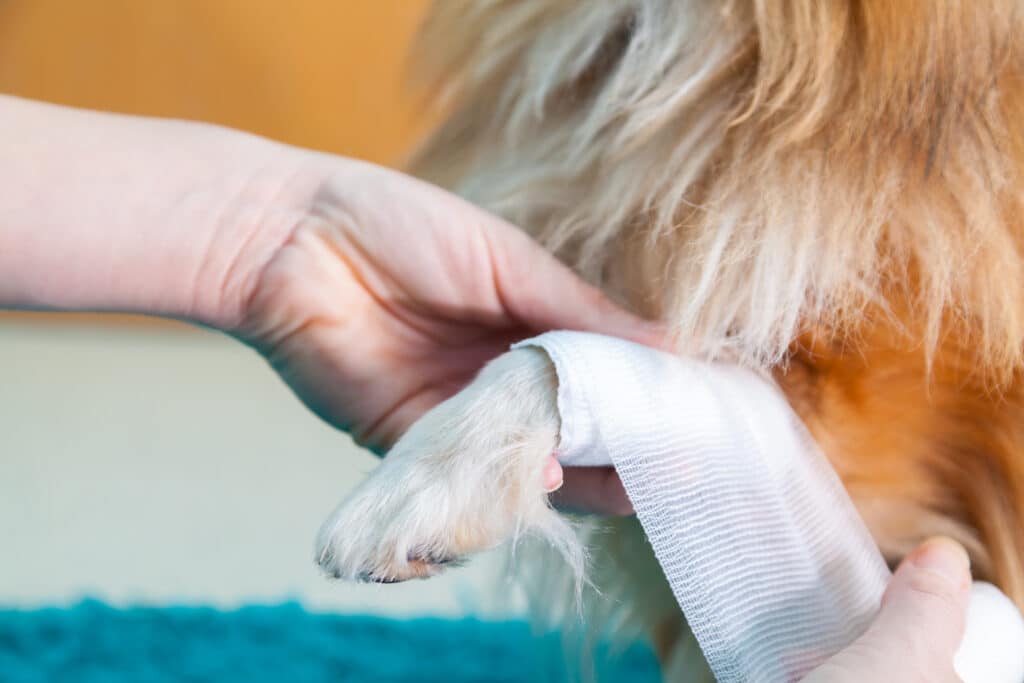
While this is not substitute for veterinary care, dog first aid can play a big part in your pooch’s survival until they make it to the vet to receive proper care.
Learn how to handle an emergency situation and help save your dog’s life with these first aid tips.
What Is First Aid?
First aid is the short-term treatment that is administered immediately after a medical emergency at the location where it occured.
It is important to note that first aid is, in no way, substitute for veterinary care in dogs. Its purpose is to reduce pain, minimize injury, and in more serious cases, keep the victims alive before appropriate care can be administered.
Recognizing An Emergency Situation

An important part of dog first aid is recognizing an emergency situation. So, here are emergency situations that you should watch out for:
- Difficulty breathing
- Bleeding that won’t stop
- Loss of consciousness/Unresponsive
- Seizure
- Difficulty moving
- Broken bones
- Vomiting
- Diarrhea for more than 24 hours
- Sudden change in appetite
- Ingestion of toxic food or substances
In the event of any of these emergency situations, it is important to call the vet or, better yet, bring your dog to the vet as soon as possible.
Things To Do In An Event Of An Emergency
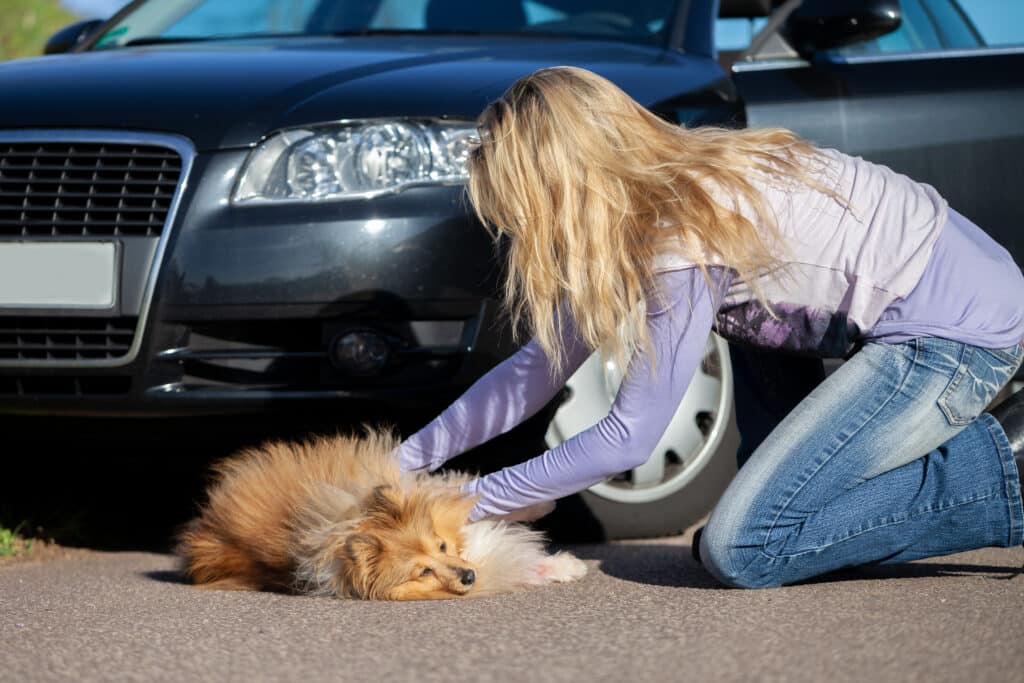
Now that you’ve successfully identified an emergency situation, what next? Here are things you should do during the medical emergency:
- Stay Calm: Being calm is key. This will help you effectively assess the situation and provide dog first aid.
- Evaluate The Situation: Assess the situation you and your dog are currently in. Are you at home? Are you in a highway with oncoming traffic? Check that you and your dog are out of harm’s way, so you can safely and successfully administer dog first aid.
- Assess Your Dog’s Condition: Check your dog’s responsiveness, vital signs, their temperature, heart and breathing rate, and even their gum color. If you think your dog’s condition is severe, rushing them straight to an emergency veterinarian (after assessing their condition) is the best course of action.
- Contact The Vet: Whether or not the condition is severe, immediately call your dog’s vet after securing your pooch and assessing their condition. It is important that you tell the vet all of your assessment, this way they can suggest additional first aid and prepare for your dog’s arrival.
- Administer First Aid: Administer first aid based on your assessment of your dog’s situation. You can cool down your dog if they are experiencing a heat stroke, or do the Heimlich maneuver if your dog is choking. Furthermore, here’s how you can appropriately administer dog first aid after assessing their Airway, Breathing and Circulation (ABC):
- Airway: Make sure your dog’s airway is clear of any obstruction. Gently open their mouth and check for anything that may obstruct their breathing.
- Breathing: Once you’ve confirmed that nothing is blocking your dog’s airway, look, listen, and feel for your dog’s breathing. If they’re not breathing, perform Cardiopulmonary resuscitation (CPR).
- Circulation: Check for a pulse and assess for any severe bleeding, from your dog’s head to toe. Elevate the injured area and apply direct pressure to any wounds to stop the bleeding.
- Get To The Vet As Soon As Possible.
What To Include In Your Dog’s First Aid Kit
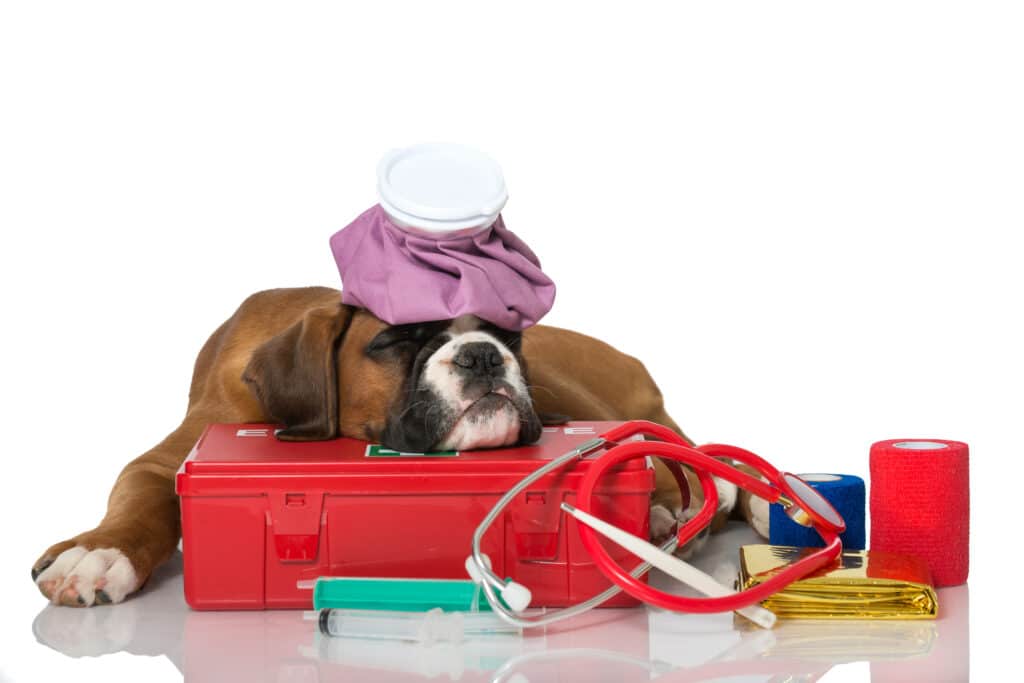
You can always buy a pre-made kit at a local pet store, but if you’d like to be more specific with yours, here are items we’d recommend to put on your dog first aid kit:
Documentation
- A list of emergency contact information (phone number and address) of your regular vet, emergency vet, animal control, and pet poison hotline.
- Your dog’s medical and vaccination records.
The Basics
- Sterile gauze pads or gauze rolls
- Elastic bandages
- Self-adhesive bandage
- Cotton balls
- Heat or cool packs – for hypothermic or overheating dogs
- Pet thermometer
- Ear wash/cleaner
- Saline eye wash
- Tongue depressors
- Styptic powder – to stop bleeding
- Hydrogen peroxide – for cleaning wounds and for inducing vomiting in case of poisoning (3% solution)
- Medical-grade saline solution
- Bandage scissors
- Clean cloths or towels
- Disposable gloves
Things Specific To Your Dog
- Your dog’s medication (if they’re currently taking medication, keeping a small supply in your first aid kit will help).
- An E-collar, leash, and identification tags.
- A basket muzzle to keep them and the people administering first aid safe.
- A carrier or a large blanket, depending on your dog’s size, to help safely transport them.
Basic Dog First Aid Procedures You Should Know
Every medical emergency is unique different, but having an understanding and learning basic dog first aid procedures can help save your dog’s life. Here are basic and general guidelines for first aid procedures that you should know about:
1. If Your Dog Is Choking
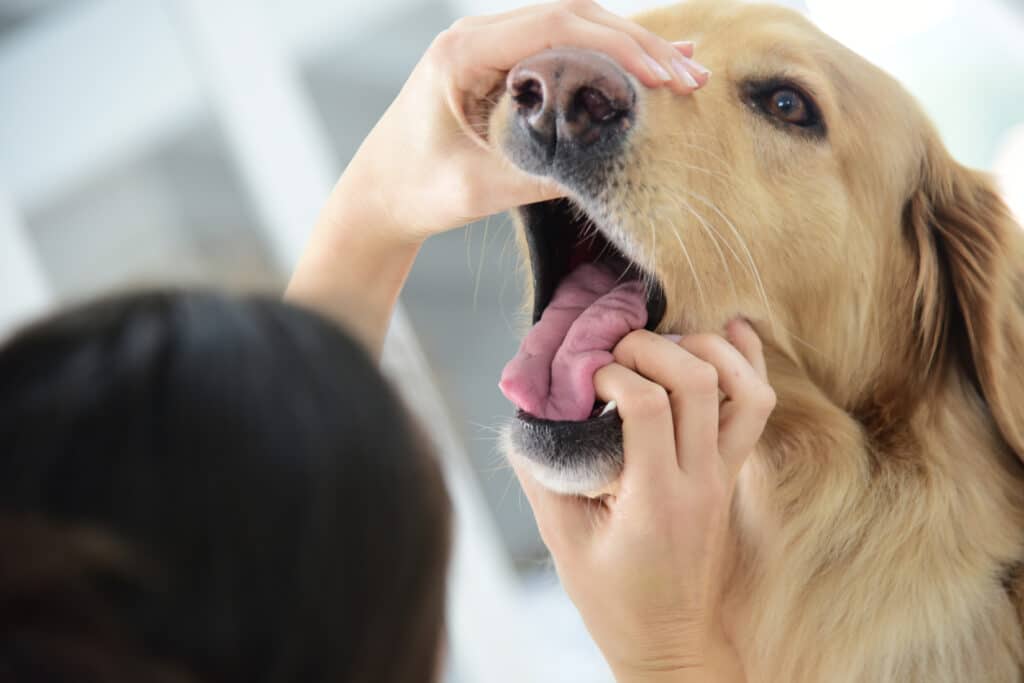
A dog that is choking will have difficulty breathing, paw their mouths a lot, make choking sounds when breathing/coughing, and may have blue lips or tongue.
Here’s what you need to do if you think your dog is choking:
- Call and inform the vet immediately.
- Carefully look into their mouth and look for any foreign object blocking their airway.
- If you see anything, try to gently and carefully remove it to ensure you don’t get bitten and the object doesn’t get pushed further down their throat.
To do this, try to use two hands to open the mouth, then use tweezers or forceps to grasp the item to remove it. Of course, you can always ask another person to help you execute this. - If the object is big (like a ball), you can sometimes dislodge this by placing firm pressure with both of your thumbs underneath the dog’s jaw at the base of the throat and pushing forwards.
- If your dog is small, you can try lifting them up by their thighs and then gently shake them from side to side for three to four times in a downward motion.
If the above dog first aid doesn’t work, you can try the Heimlich maneuver:
- Stand behind your dog or lift them up so that their spine is against your chest.
- Wrap your arms around your dog’s belly, just under their ribs.
- Make a fist with your hands while they’re wrapped around your dog’s belly.
- Place your fist under the soft spot on their belly, and then push up and forward.
- Repeat the process until the object is dislodged enough to be removed by your fingers.
If nothing else works, bring your dog to the vet as soon as you can.
2. If Your Dog Is Not Breathing
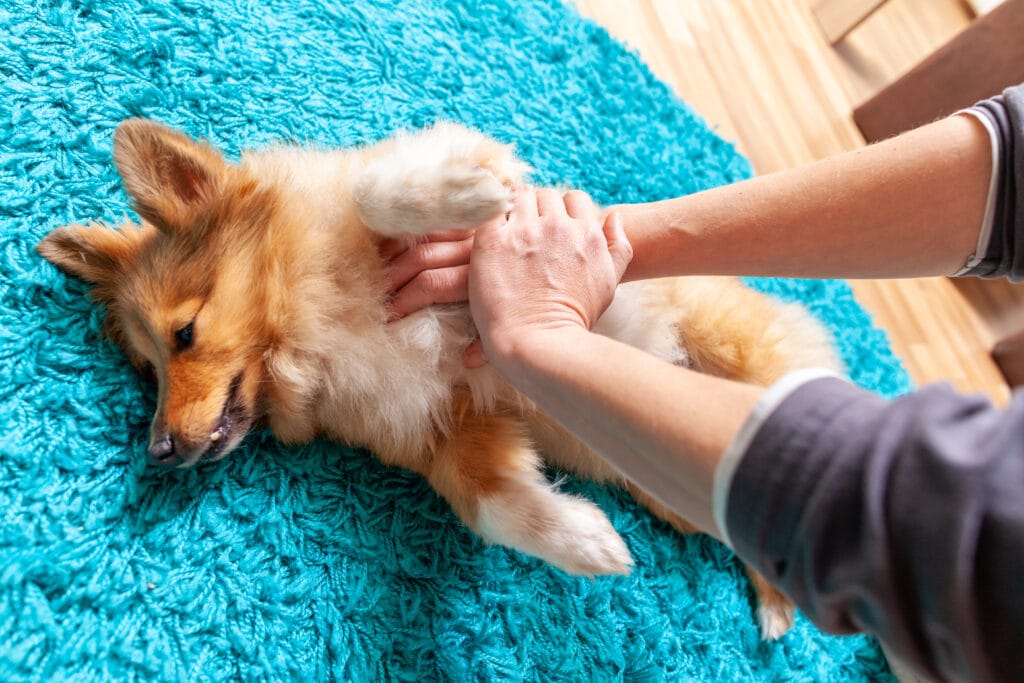
If your dog is not breathing, the first thing you must do before anything else is call an emergency vet while you give him the following first aid:
- Stay calm.
- Open your dog’s mouth and see if there is anything blocking their airway.
- Ensure that nothing is blocking your dog’s airway.
- Perform rescue breathing by doing the following:
- Hold your dog’s mouth closed with your hands.
- Extend your dog’s neck to help open the airway.
- Breath into their nose until you see their chest expand.
- Repeat the process every five seconds until your dog regain consciousness or until you get them to the vet.
- If rescue breathing is not effective, you can start giving your dog CPR. Here’s how you can do it:
- Gently lay your dog on their back and place your hands on their breastbone.
- For small dogs, make sure that the heel of one of your hands is directly placed over their heart while the other hand is directly over the first one.
- For deep-chested dogs (like Great Danes), place the heel of your hand over the widest part of their chest while the other hand is directly over the first one.
- For barrel-chested dogs (like American Pitbulls), place one hand over the widest part of their chest bone and place the other hand directly over the first one.
- Push hard AND fast on your dog’s heart 100-120 times per minute (or to the beat of “Stayin’ Alive”).
- Make sure the chest comes back fully before compressing again.
- Alternate 30 compressions with two rescue breaths until you feel a heartbeat or until you’ve arrived at the vet.
3. If Your Dog Is Having A Seizure

Seizures in dogs can happen due to a number of reasons. It can be a sign of an underlying problem ranging from poisoning to epilepsy to liver disease.
Symptoms of a seizure include collapsing, jerking, stiffening, muscle twitching, loss of consciousness, drooling, and foaming at the mouth.
If your dog is having a seizure, you can perform dog first aid by doing the following:
- Keep your dog away from anything that could hurt them during their seizure. It could be anything from the stairs to furniture.
- Do not try to restrain your dog.
- Avoid touching their head or mouth, they could bite you.
- Do not put anything in their mouth.
- Time the seizure, if it lasts for more than five minutes, your dog could be overheating.
- If they are overheating, cool them down by turning a fan on your dog or using a cooling pack on their paws.
- Once the seizure has stopped, bring your dog immediately to the vet.
4. If Your Dog Is Bleeding
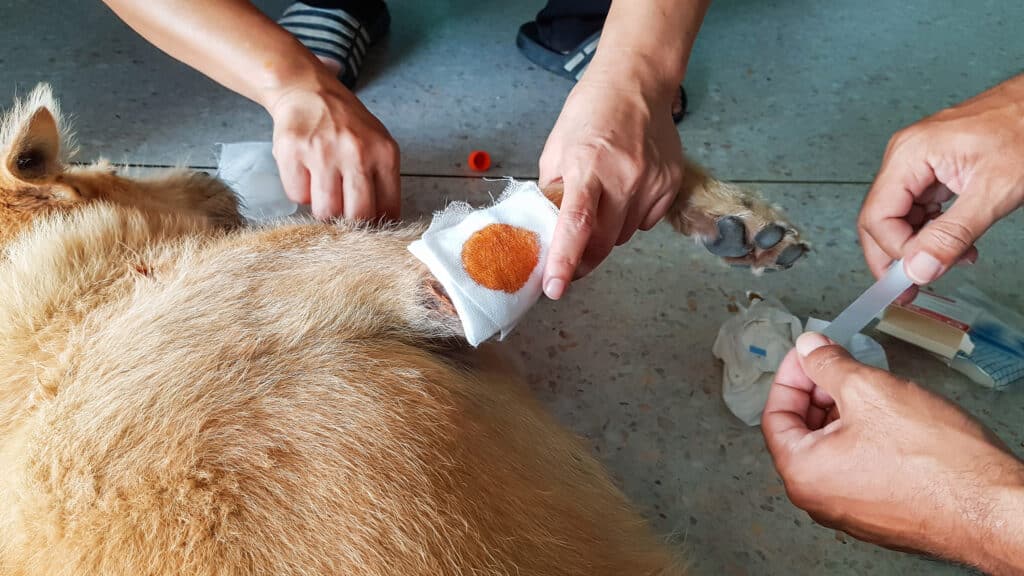
Bleeding can come in two forms: external and internal bleeding. And we will discuss how to best provide dog first aid if your pooch ever experiences any of them.
External Bleeding
External bleeding can become life-threatening if not properly taken care of. Even bleeding from minor wounds can cause infections. So, before you reach the vet, it’s best to provide dog first aid.
When your dog experiences severe external bleeding, you can:
- Use a clean cloth or gauze pad and apply pressure to the bleeding area.
- Cover and protect the wound with bandages or a clean cloth.
- If bleeding won’t stop even after applying consistent pressure for about 5-10 minutes, bring your dog to the vet.
However, if the bleeding is caused by a minor wound, you can:
- Dry the wounded area and then clean it with a disinfectant.
- After cleaning the wound, apply gauze or bandage, if necessary.
- If you need to wrap the wound, make sure that it isn’t so tight as to cut off circulation.
Internal Bleeding
Internal bleeding is a very serious problem. Because unlike external bleeding, this one can be difficult to detect and usually requires immediate attention.
Symptoms may include pale gums, weak and fast pulse, fast breathing, lethargy, black stools, trouble breathing, and a swollen abdomen.
If you suspect internal bleeding, make sure to immediately bring your dog to the vet.
5. If Your Dog Is Poisoned
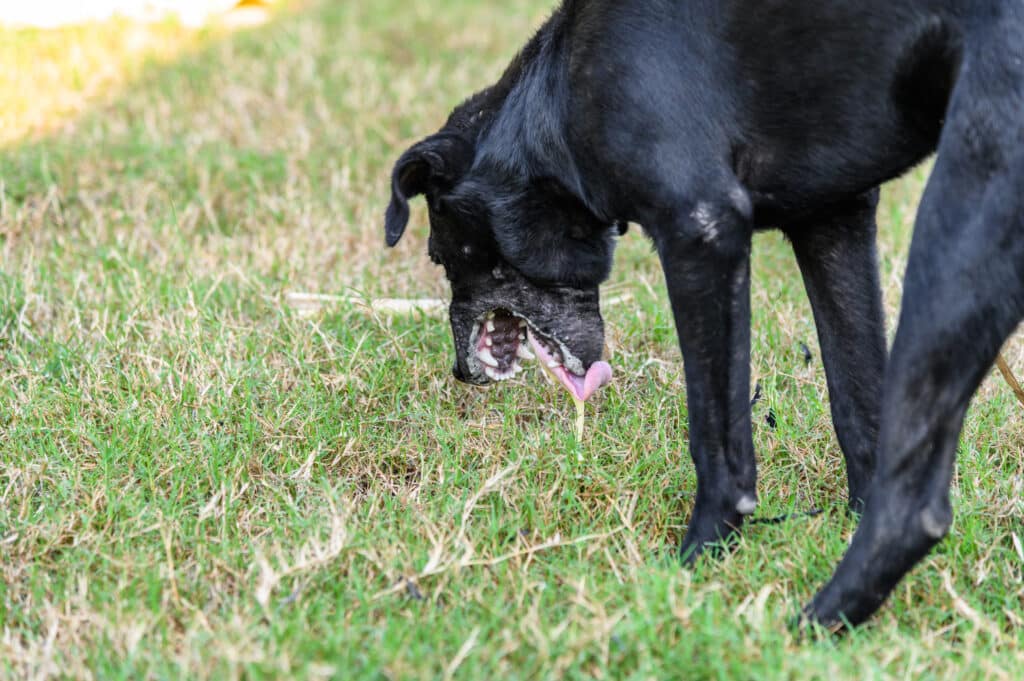
Your dog can be exposed to a lot of toxins. And it can come in the form of food, plants, or products such as cleaning products, rodent poison, or antifreeze.
Symptoms of poisoning include vomiting, diarrhea, loss of appetite, pale gums, seizures, and lethargy.
Here are dog first aid you can learn and apply if you suspect dog poisoning:
- If your dog’s eyes and skin are exposed to a toxic product:
- Check the label for instructions on what to do.
- Usually, instructions tell you to flush the exposed area with soap and water, so do that as soon as you can.
- Bring your dog to the vet.
- When you bring your dog to the vet, make sure to take the toxic product with you and let the vet know how much of the product your dog is exposed to.
- If your dog ingested anything toxic:
- Call your dog’s vet or an emergency vet, the Animal Poison Control Center (888-426-4435) or Pet Poison Helpline (855-764-7661).
- Make sure you have the following information available for when you call the abovementioned: breed, age, sex, weight, symptoms, the name and description of the toxic substance, amount of substance ingested, and how long your dog has been exposed to the substance.
- You can also bring the toxic substance your dog ingested to the vet, so they know exactly what they’re dealing with.
6. If Your Dog Is Having A Heat Stroke
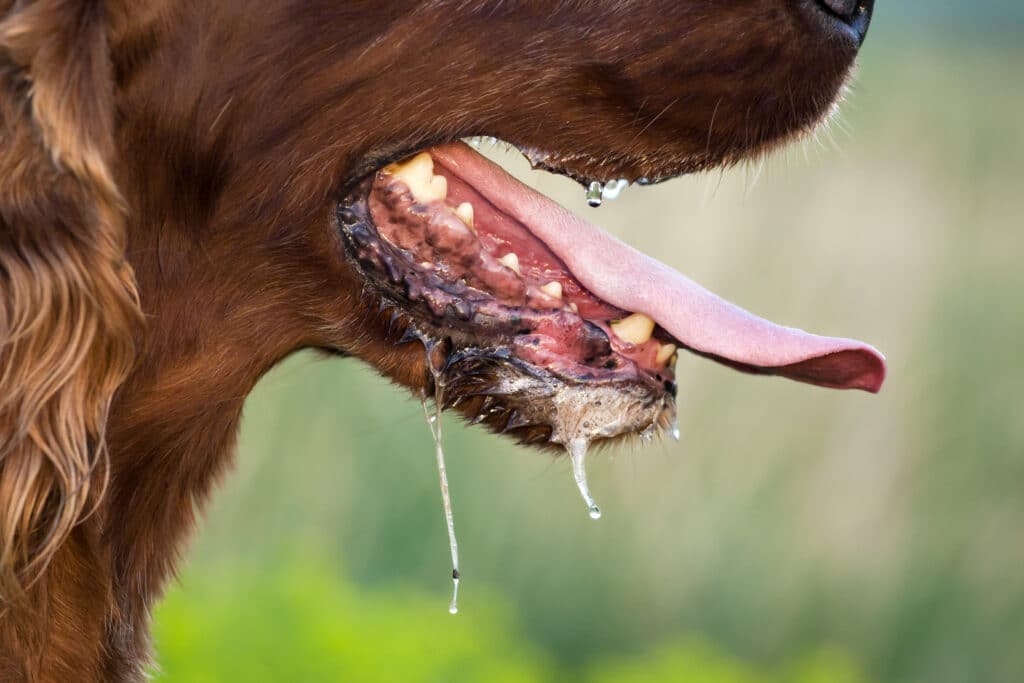
Heat stroke can be a serious problem, especially during Summer. And dogs that suffer from a heat stroke usually display the following symptoms: heavy panting, difficulty breathing, elevated temperature, excessive drooling, lethargy, seizures, and dry or sticky gums.
If you think your dog is having a heat stroke, here are dog first aid you can do:
- If your dog is in a hot environment, move them to a shaded and cool area.
- Pour cool (not cold) water on their body, especially on their paws and ears. Avoid pouring water on their face.
- Place a wet cloth under your dog and continually replace the cloth (to avoid trapping heat).
- If you can, turn a fan on or open the car windows to allow a continuous flow of air to the dog.
- Take your dog to the vet immediately.
Dog First Aid Could Save A Life
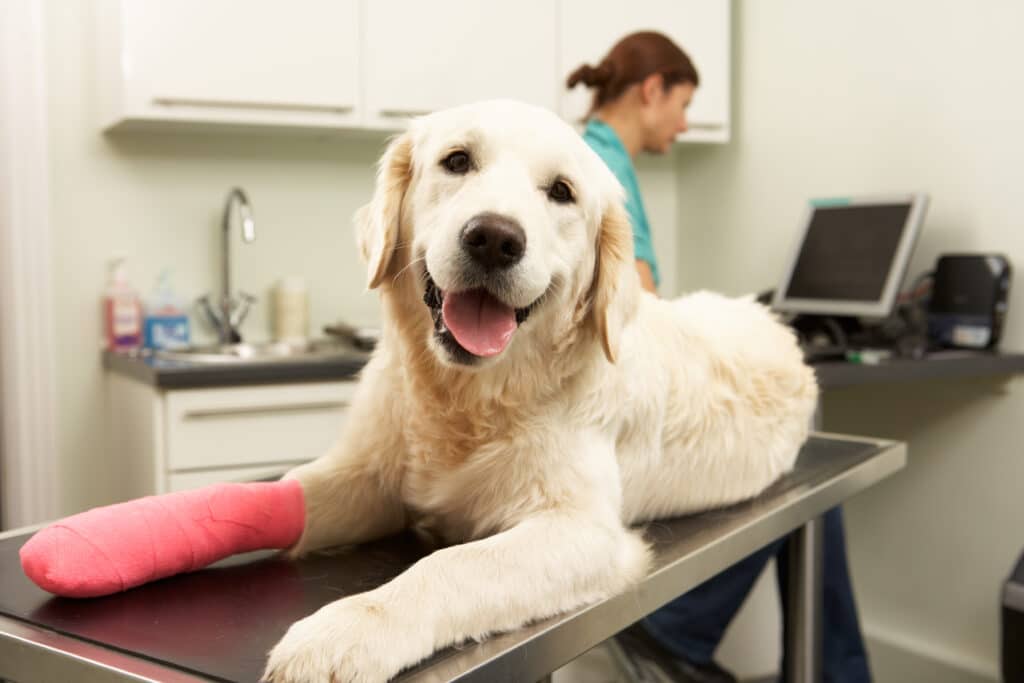
Hopefully, your pooch will never have to experience a serious medical emergency. But in the case that he does, it’s important that you know how to face the situation head on.
We’d like to reiterate that first aid is not substitute for veterinary care, but it can be a crucial step to help your dog survive a medical situation. Remember that being prepared for medical emergencies and knowing dog first aid can help save your pet’s life.









Leave a reply